Clostera anastomosis
(Esper, [1783])
-
 Subfamily: Pygaerinae
Subfamily: Pygaerinae -
 Wingspan: 30-40 mm
Wingspan: 30-40 mm -
 Flight period: Apr - Aug
Flight period: Apr - Aug -
 Spread: Uncommon
Spread: Uncommon -
 Host plants: Populus sp., Salix sp.
Host plants: Populus sp., Salix sp.
Information
The Clostera anastomosis also called Greater Chocolate-tip is a moth of the Notodontidae family with a wingspan of 30-40 mm.
In Europe it is absent in the British Isles in Norway and in Portugal, in doubt about the rest of the Iberian peninsula. In Italy it is absent in Sardinia. *
Its range extends to the Palearctic eco-zone as far as Japan. ***
In Italy it is absent from Sardinia *.
The front wings of the Clostera anastomosis are ocher brown, with intense shades of dark orange.
The anterior wing has three lighter shaded lines, two almost in correspondence with the separations of the postdiscal-discal and discal-basal regions,
and one parallel to the latter in the basal region. A series of dark spots is visible in the postdiscle area parallel to the margin.
A shaded dark spot of triangular shape, with apex in the median area and base near the inner margin, is visible on the wing. **
The hind wings are in the background color of the front wings. Head, thorax and abdomen are in the background color of the wings.
In males, a tuft of dark hair is visible in the anal area. **
In Italy this species is very localized and uncommon.
Its presence in our territory is limited to the northern regions and to Tuscany.
Species generally linked to humid environments: it inhabits the plains, the valleys, the banks of the watercourses, up to 1200 meters above sea level. ****
As a rule it has two generations, in April-June and in July-August. ***, ****
However, it can produce up to four generations, overwintering as a third age larva in hibernation on the bark.
In northern Italy, in certain years, there have been damage to Populus crops ". ****
The Clostera anastomosis inhabits warm and at least moderately humid sites such as forest edges, lowland wetlands, stream valleys and similar habitats.
The eggs are spherical initially brown / purplish, translucent, with a rough surface, then become brown / reddish with white markings. **
The caterpillar matures in five stages. The fledgling larva is 2 mm long with a reddish-brown body and numerous long hairs.
In the fifth stage the larva has a length of 35-40mm, the sides are brown-gray.
Dorsally it has a wide black stripe with a double line of white dots, bordered by a yellow line with red tubercles.
above the 3rd and 10th segment a wart-shaped protuberance, with long hairs. *
The chrysalis is brown / dark brown in color, with translucent yellowish reflections. The cremaster opens like a kind of flower in a series of small hooked appendages.
It is found inside a silky cocoon with a sparse texture. **
The host plants of this moth are: Populus tremula, Populus sp. Salix sp., With preference for Populus.
* Lepidoptera mundi https://lepidoptera.eu/ - Fauna Europea https://fauna-eu.org/
** Bestimmungshilfe für die in Europa nachgewiesenen Schmetterlingsarten - http://lepiforum.de/
*** Roland Robineau, Guide de papillons nocturne de France, Delachaux et Niestlé, 2011 p. 87
**** Bertaccini, Fiumi & Provera, Bombici e Sfingi d'Italia, Volume II, 1997
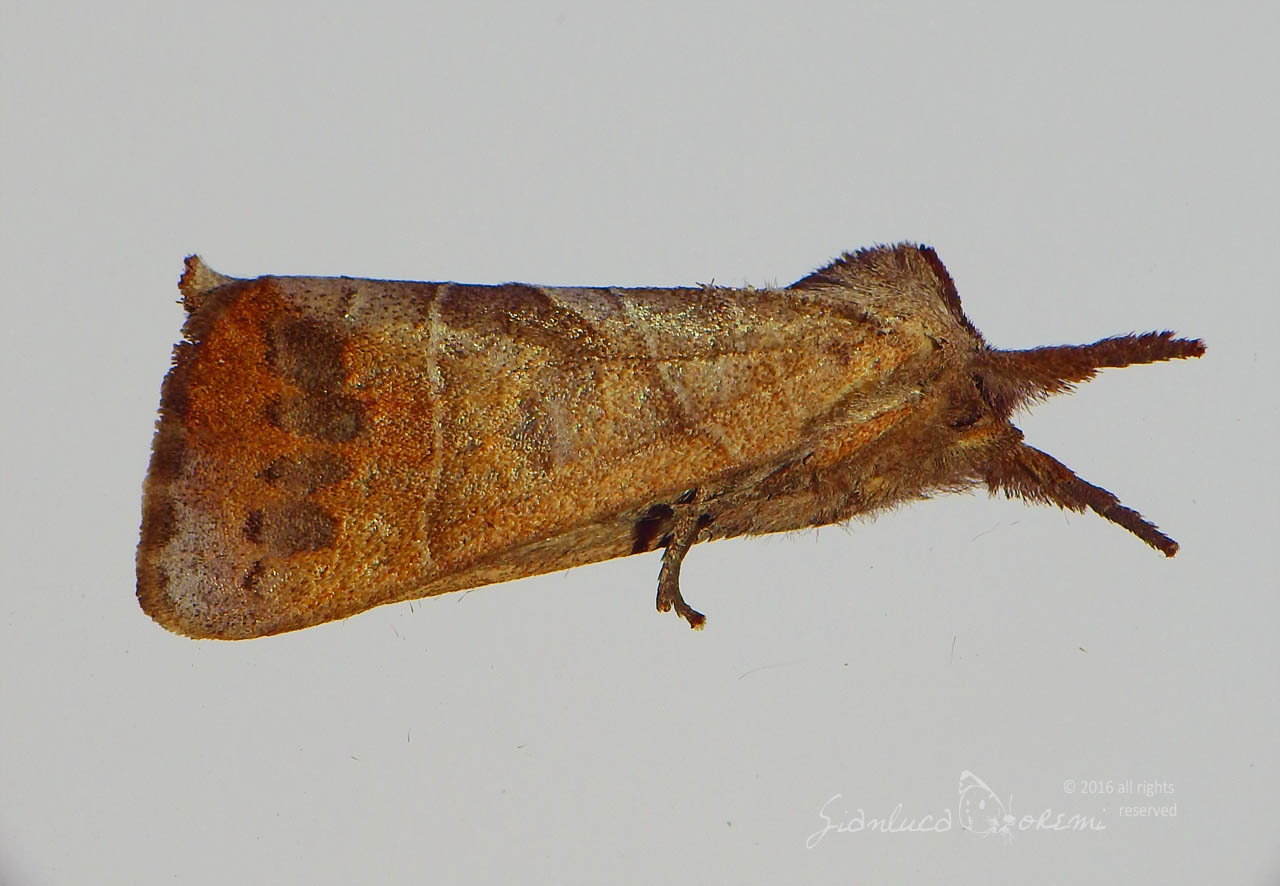

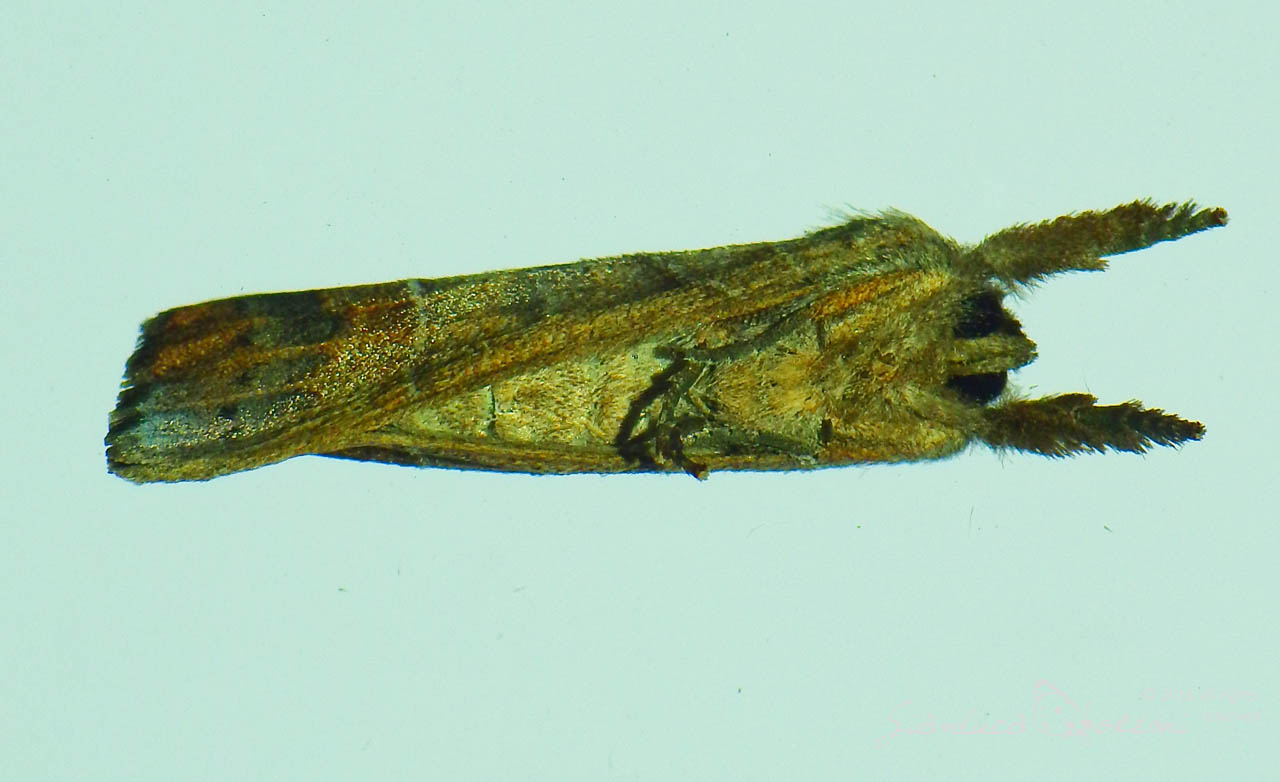
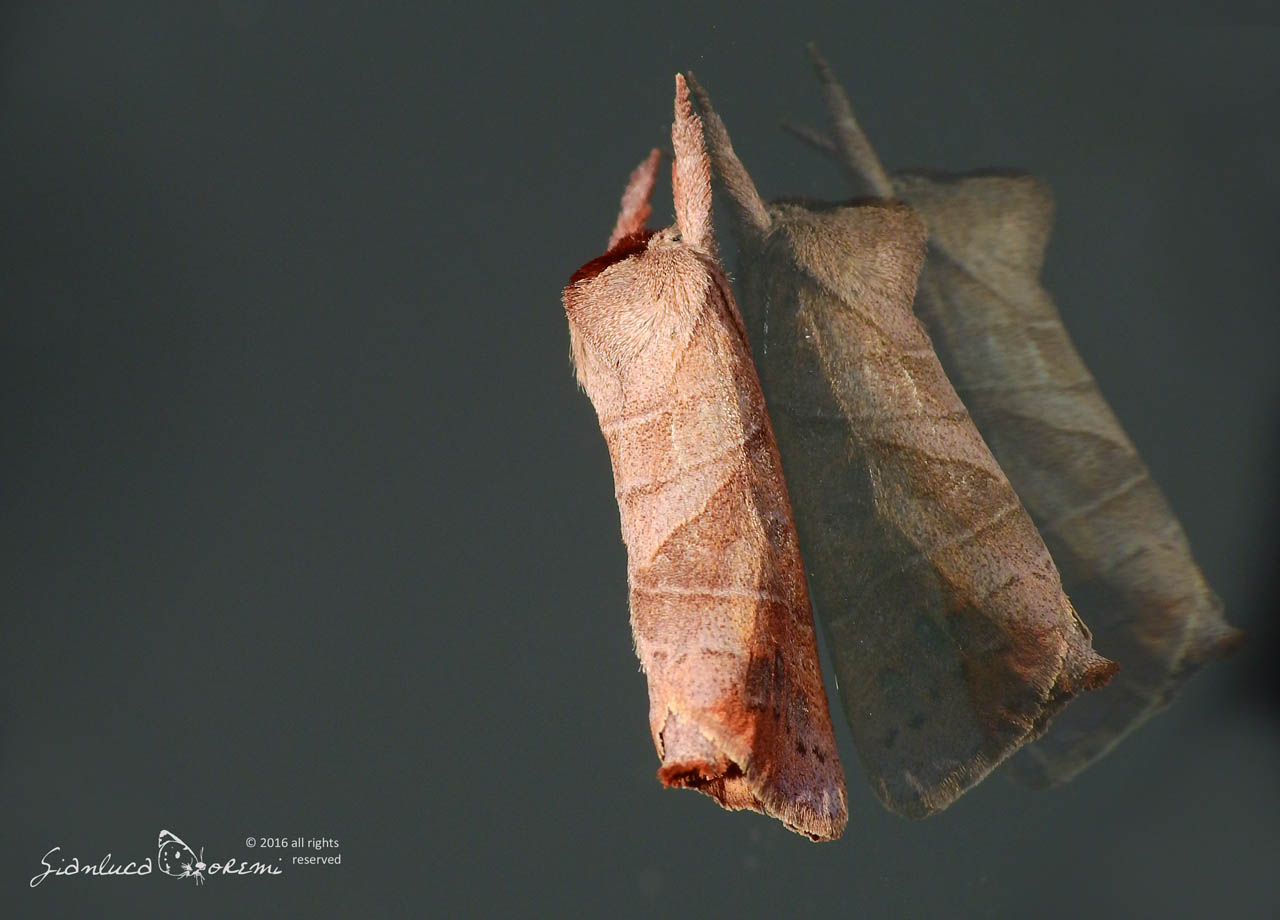




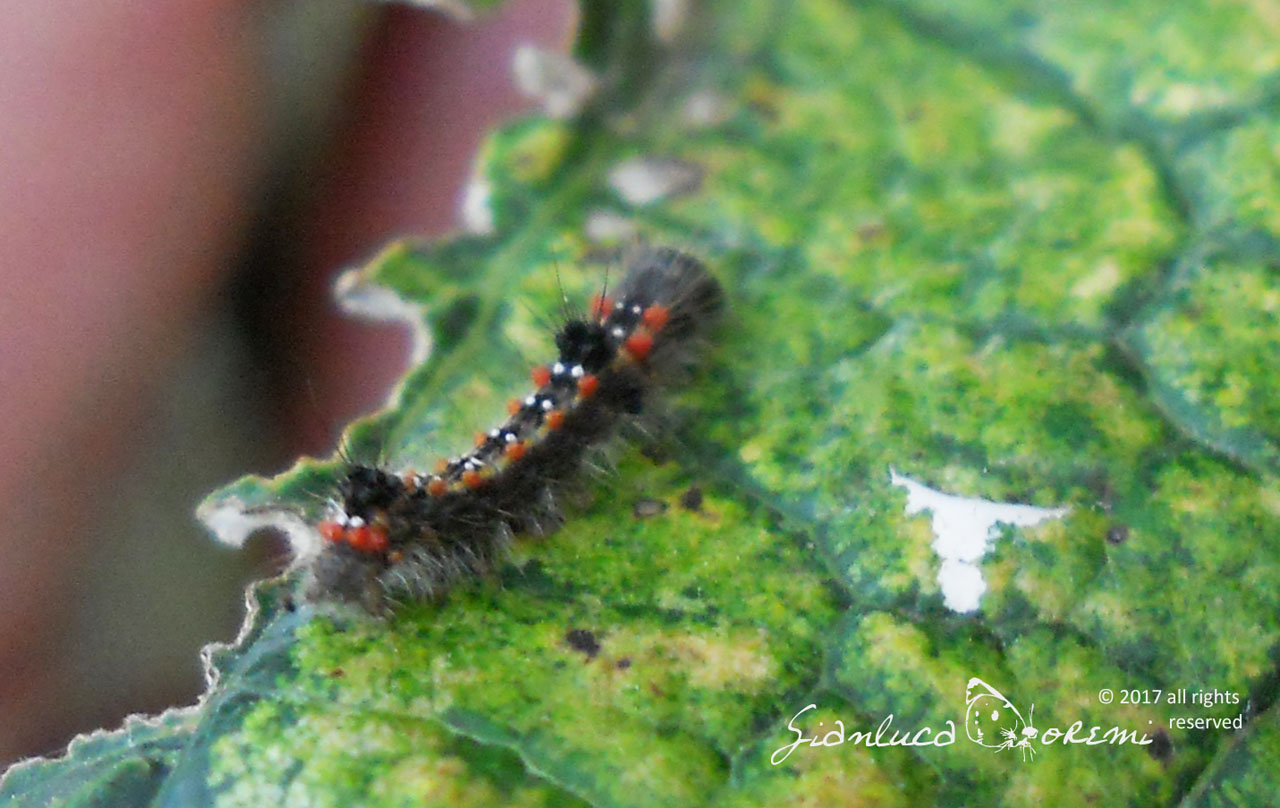
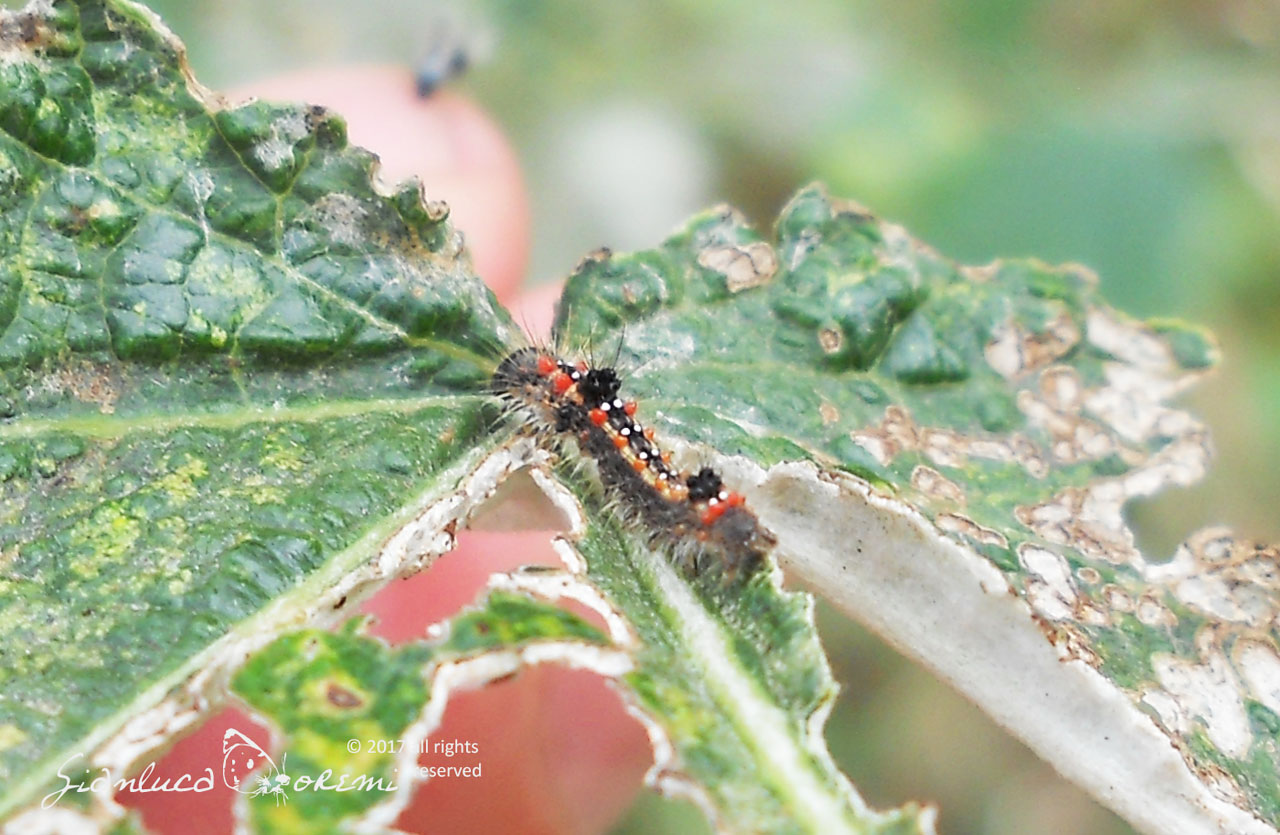

 EN
EN ITA
ITA
Social and publications